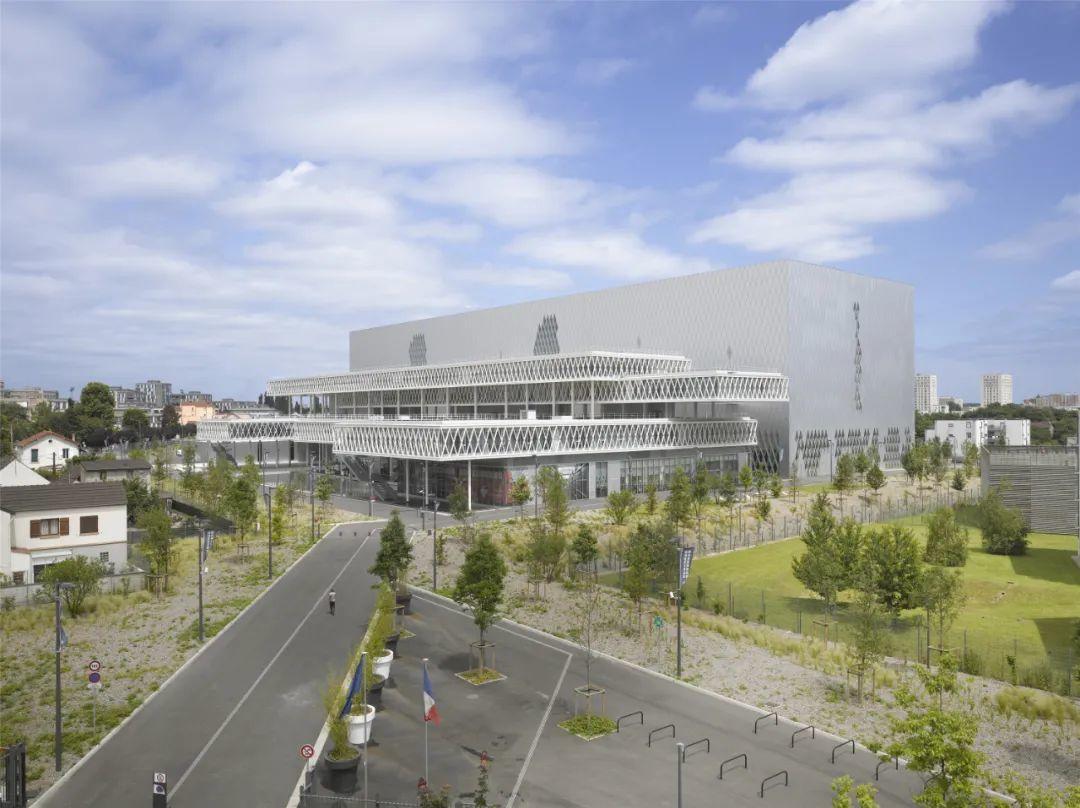
设计单位 FUKSAS
项目地点 法国巴黎
项目面积 108,136平方米
建成时间 2013年
新法国国家档案馆项目的灵感来自其混乱与秩序共存的独特城市环境。这种反映在综合体组织形式上的二元对立性,滋生了该项目的设计概念。
The project of the New National Archives of France draws its inspiration from the surrounding reality, from the city seen as coexistence of chaos and order. The concept is born and takes place from this duality which is reflected in the organization of the complex.
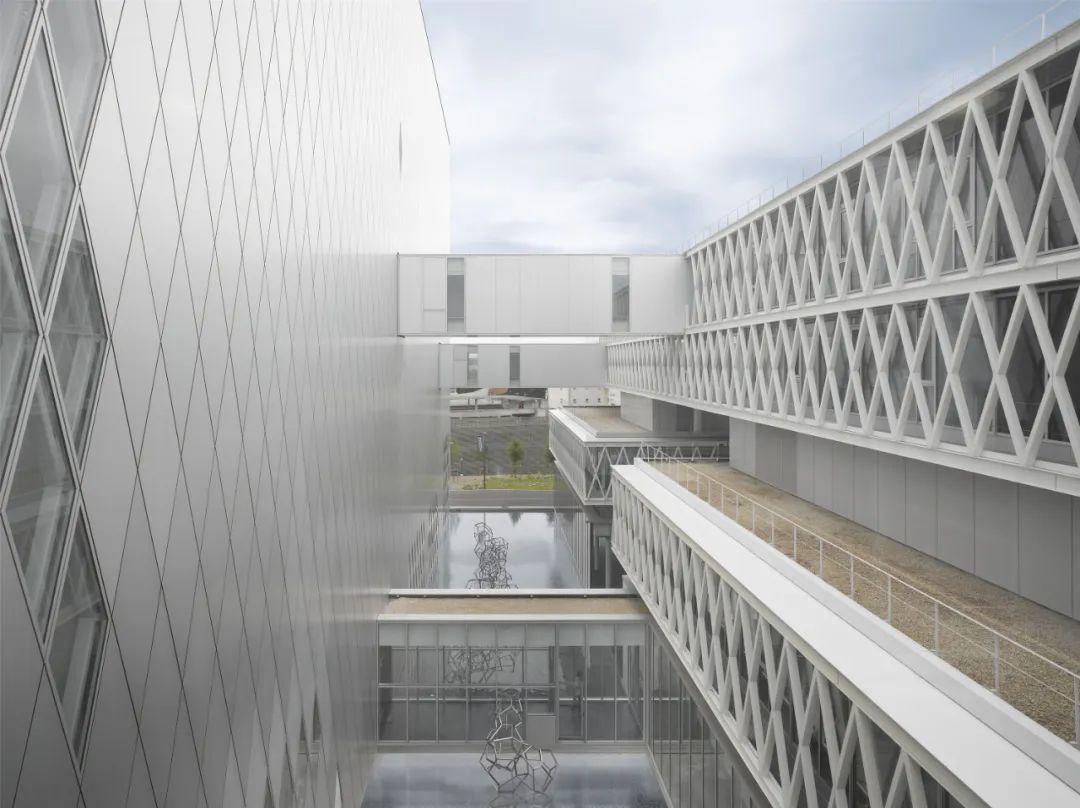
项目伊始,设计团队就旨在梳理基地及其所在地域和社会文化背景下的特征,以挖掘这座建筑的独特身份。项目设计遵循建筑的基本原则,即根据使用者的需求打造空间。通过建筑的嵌入,实现了圣丹尼斯地区的城市建筑肌理和景观意图。
The initial choice was to investigate the site and its characteristics in both territorial and socio-cultural contexts to reveal an unique identity. The work has therefore been thought following a cardinal principle of architecture to create spaces according to the needs of the communities that populate them.The design of the New National Archives of France has followed the intent of enhancing the geographical and architectural landscape of the area Pierrefitte sur-Seine Saint Denis, where the building inserts itself.

这个综合体并没有被设计成一座自我参照式建筑,而被打造成承载记忆和集体身份、同时接纳当代艺术的场所。项目旨在让观众发现、研究和参与空间使用。它由两个“主体”组成:一个水平延伸,“悬浮、轻质、透明”;另一个则高挑而有张力,“固定在地面上,令人印象深刻”。
The complex has not been designed as a self-referring architecture, but as a work that could hold the memory and the collective identity, at the same time open to contemporary artistic expressions. It has not been thought in a contemplative perspective, but in a perspective of discovery, research and participation for the audience. The project is composed of two main “bodies”: one that extends horizontally, “suspended, lightweight, transparent”; the other with a tension in height, “anchored to the ground, imposing, reflective”.
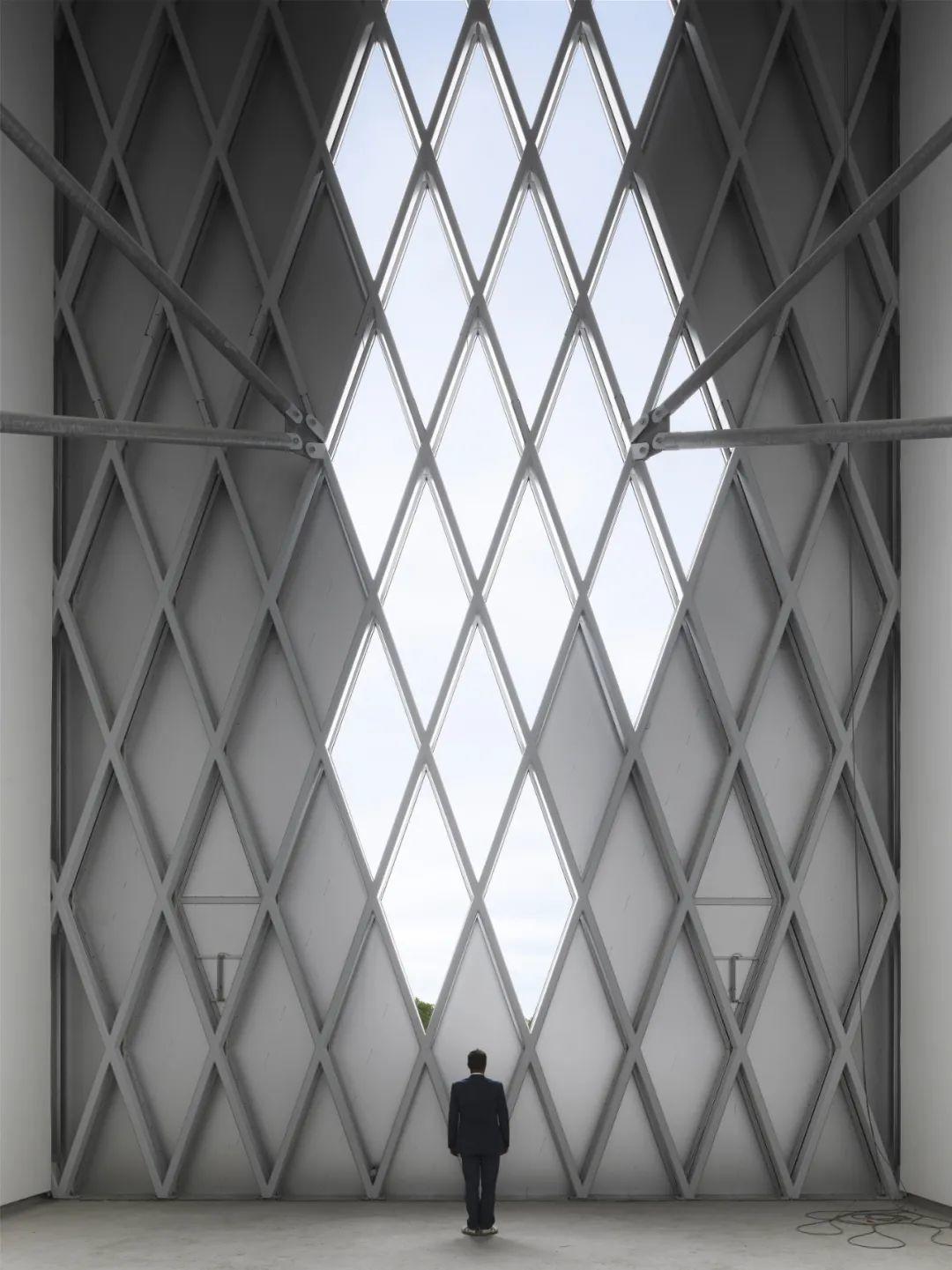
第一个由悬臂体组成的建筑主体延伸至城市,称作“卫星”。它包含办公、会议和展览等功能。该体块的建筑立面大多为玻璃,通过不同控制比例,实现体量的轻质透明。
The first, stretching out towards the city, consists of cantilevered volumes called “satellites” that accommodate the offices, the conference room and the exhibition room. The facades, mostly glazed, give lightness and transparency to the volumes of different proportions, that follow each other and overlap in “suspension” on the surfaces of the water.
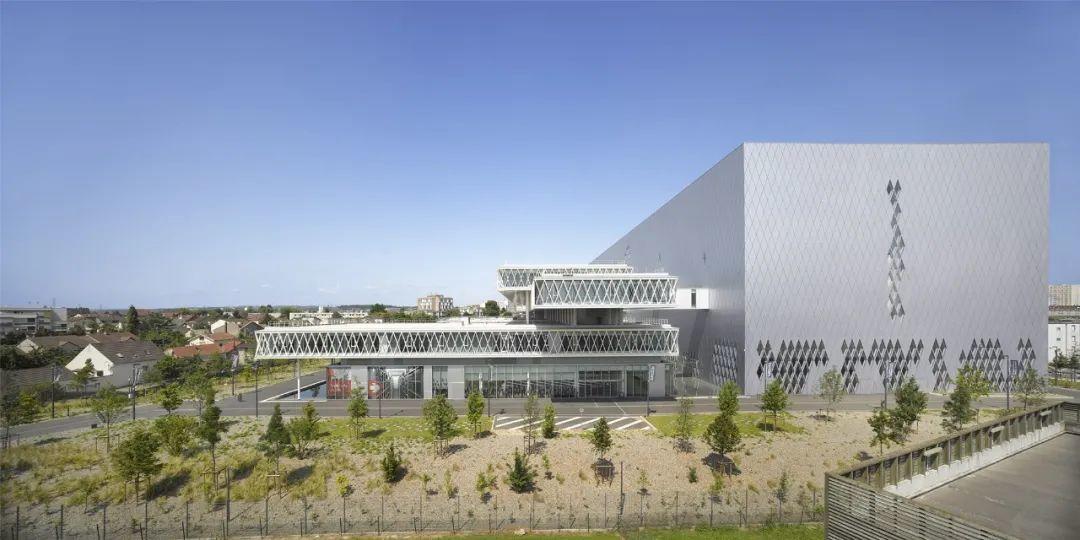
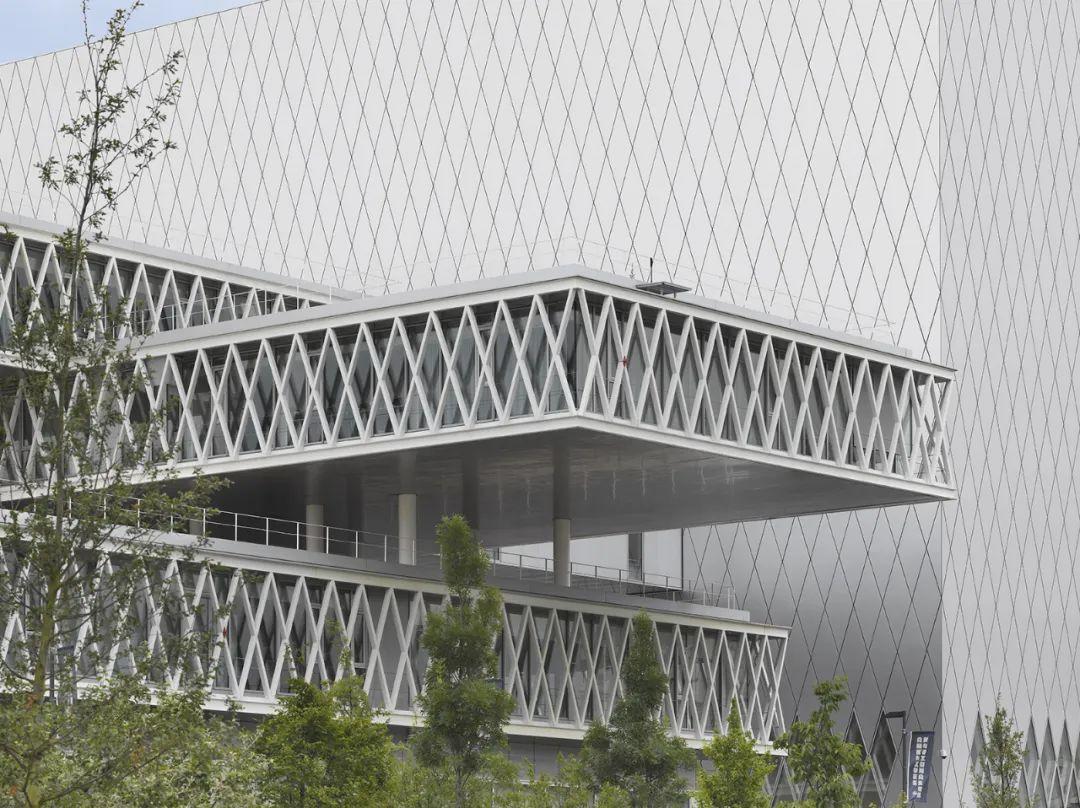
另一个档案馆建筑形态雄浑壮观,是一个纪念、研究的场所,包含档案储藏和阅览功能。铝制表皮覆盖在整个建筑体量,局部玻璃材质的使用实现了阅览室和入口区域的采光充足。在这座极具雕塑感的建筑前方,设计置入了一个水池,在它的映照下,整座建筑宛如一个宝箱。
The building that accommodates the Archives is an imposing monolith thought as a place dedicated to memory and research. It houses the archival documents and the reading room. The facades of the monolith are coated with aluminium “skin” that runs throughout the volume, except for some glazed insertions that allow the amount of natural light in the reading room and the entry route. The “noble” sculptural building, with a basin in part lapped against it, reminds the idea of a precious object, a treasure chest, that is reflected in the water veil.

水池分布在档案馆、“卫星”及其底部空间。水池上方的走廊连接了两座建筑。建筑外立面以菱形为母题,在各种自然和反射光线的影响下,建筑表面呈现不同的观感。
The basins insert themselves between the building of the Archives, the “satellite” volumes and at the foot of the satellite volumes. Walkways above them create a connection both between the cantilevered volumes and the two “bodies”. The water veil becomes a vehicle of change for the architecture, designing voids and new spaces, thanks to the reflections and the play of natural light created by the cuts of the suspended volumes and the “skin” of the monolith. The facades of both “bodies” follow a lozenge geometry that is repeated both in the aluminium cladding of the building of the Archives and in the glass facades of the “satellite” volumes.


项目以现代的设计方式塑造了空间。在档案馆和“卫星”之间,设计置入了Antony Gormley的艺术作品,它“悬浮”于水面之上,并沿建筑立面延伸。在水池和建筑立面的反射、映照下,这种建筑与艺术作品互相对照的方式在凸显艺术的同时,赋予了十二面体链结构生命。
Between the monolith and the “satellite” volumes stands the artwork by Antony Gormley. A precious sculptural object that rises from the veil of the water below, like to draw strength from it. This redesigns the spaces in a contemporary way, winding along the facades of the architectural complex. The geometric faces articulate the artwork along its passage and give life to the structure of a chain of dodecahedra, which reflects and projects itself between the basin of water and the mirror surfaces of the volumes.
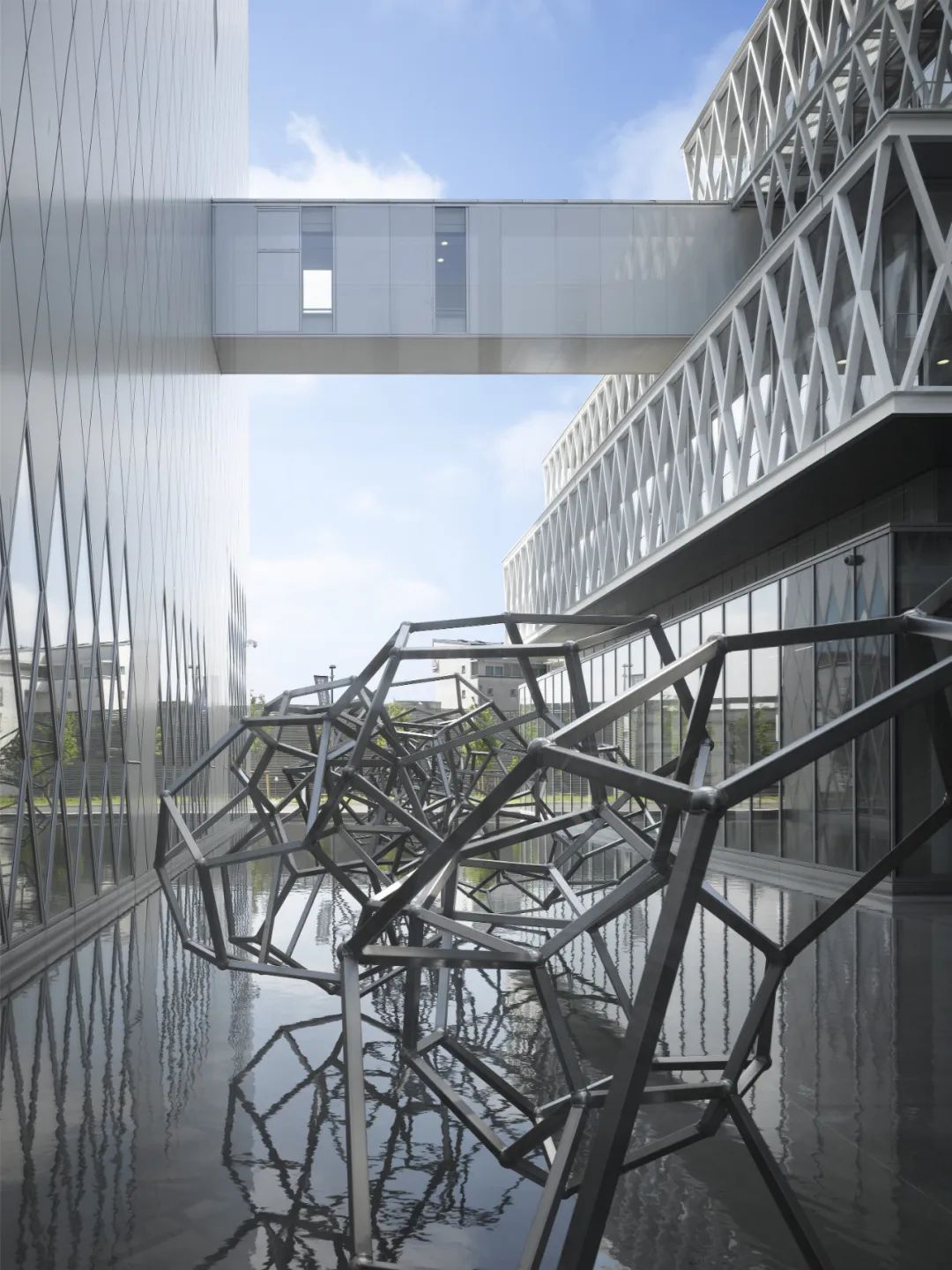
Pascal Convert的作品则象征性追溯了与记忆的联系。一系列混凝土“保险箱”设置在“卫星”体量前的区域。它们以浮雕形式凸现出一些在集体记忆中留下印记的人物面孔。
The link with the memory is symbolically traced in the work of Pascal Convert, a series of concrete “strongboxes” set in the area in front of the “satellite” volumes. These show in relief the faces of some personalities that left their mark on the collective memory. The art installation is tightly anchored to the ground, as well as the volume of the monolith, like roots sinking into the depths of memory.
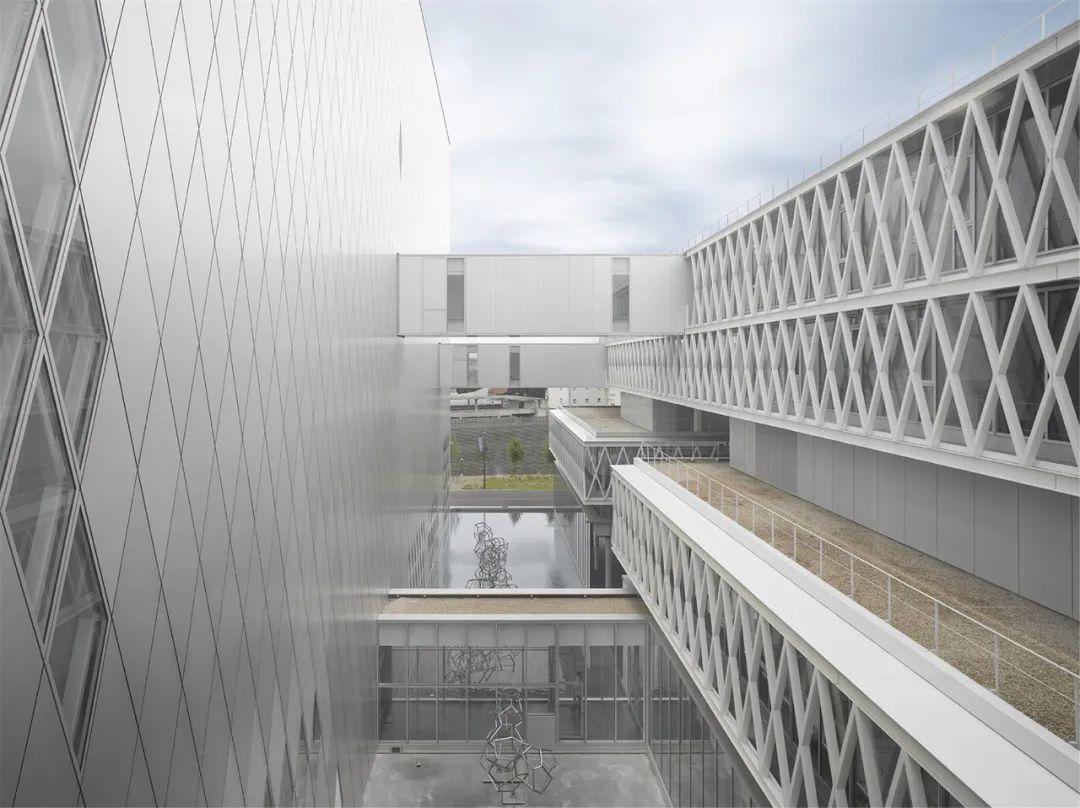
两层通高大厅欢迎来访者。艺术顾问Susanna Fritscher通过极简主义手法强调了“卫星”体量的悬浮感。设计用红色阴影的不锈钢“薄板”打造假天花板,强调了建筑综合体和建筑线条之间的互动。红色赋予了空间纵深感,同时在物质和非物质之间创造了实体和空隙。
A double-height hall welcomes the visitor. The “suspended” effect of the “satellite” volumes is highlighted by the art intervention by Susanna Fritscher which, through a minimalist touch that consists of the realization of false ceilings as stainless steel “sheets” shaded in red, emphasizes the interaction between the architecture of the complex and the lines of the “satellites” volumes. The red colour gives depth to the volumes that stand out horizontally at different heights, creating at the same time a play of solids and voids, between material and immaterial.
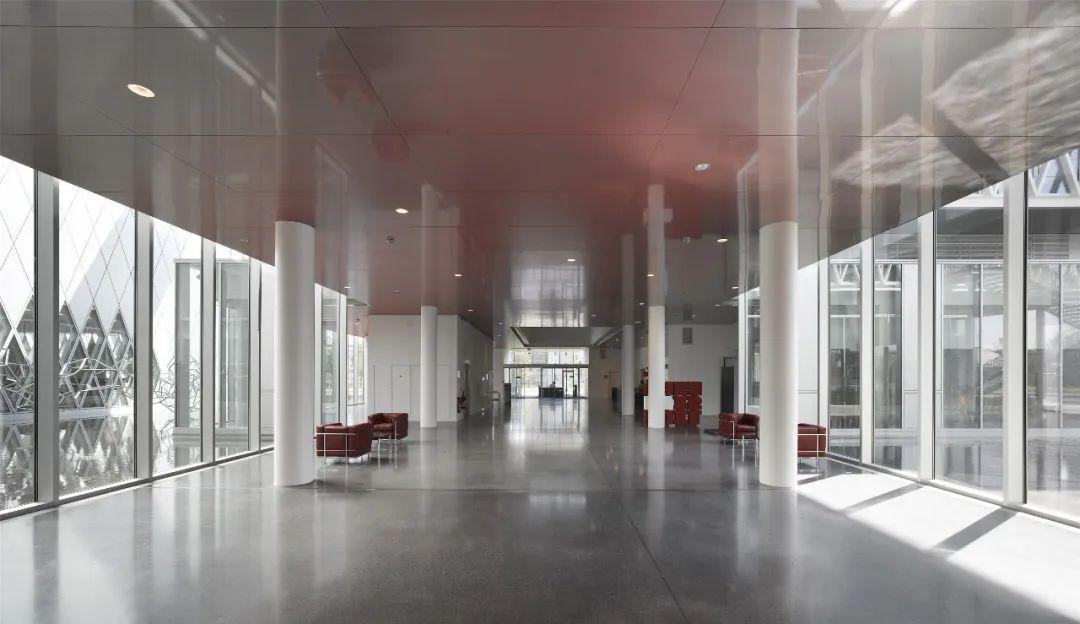
入口空间通向公众区域:阅览室、展览室和会议室。建筑内部的大型开阔空间,使人一进入建筑就感知到这个地方的重要性与独特性。
The entrance leads to areas dedicated to the public: the reading room, the exhibition room and the conference room.The seat for the conference room, “Carla” for Poltrona Frau, realized in red colour textile is by Fuksas architects. The chair is formed of two planes that intersect and rotate their way into the back, chair and armrests, just like a flower. A measured, minimalist shape. The interiors are characterized by large spaces that give an overview that makes immediately perceive the importance and the uniqueness of the place.

环境、地域的重要性在Florence Mercier的景观干预后实现。他的景观设计在自然、建筑和人之间创造了一种真实的互动。参观者经过绿色人行道后进入综合体,时不时出现几何形状、颜色等的变化。这是一个旨在表达情感的项目。两个体量代表着两个“世界”,通过走廊象征性连接在一起。在不断相互参照中,创造出一种根植于对过去的记忆、着眼于当代和未来的身份。
The importance of context, and therefore the importance of the territory, assumes concrete form in the landscape intervention by Florence Mercier. His design of green spaces has created a real interaction between nature, architecture and the audience. The green walk that introduces and takes the visitor to the complex is like a stage that alternates geometries, shapes, colours and shades. A project that aims to give emotions. Two “bodies”, two “worlds”, symbolically connected by walkways that, in a constant cross-reference, creates an identity that is rooted in the memory of the past with an eye to the contemporaneity and the future. The project reflects identity and memory that belong to France and to all humanity.

设计图纸 ▽
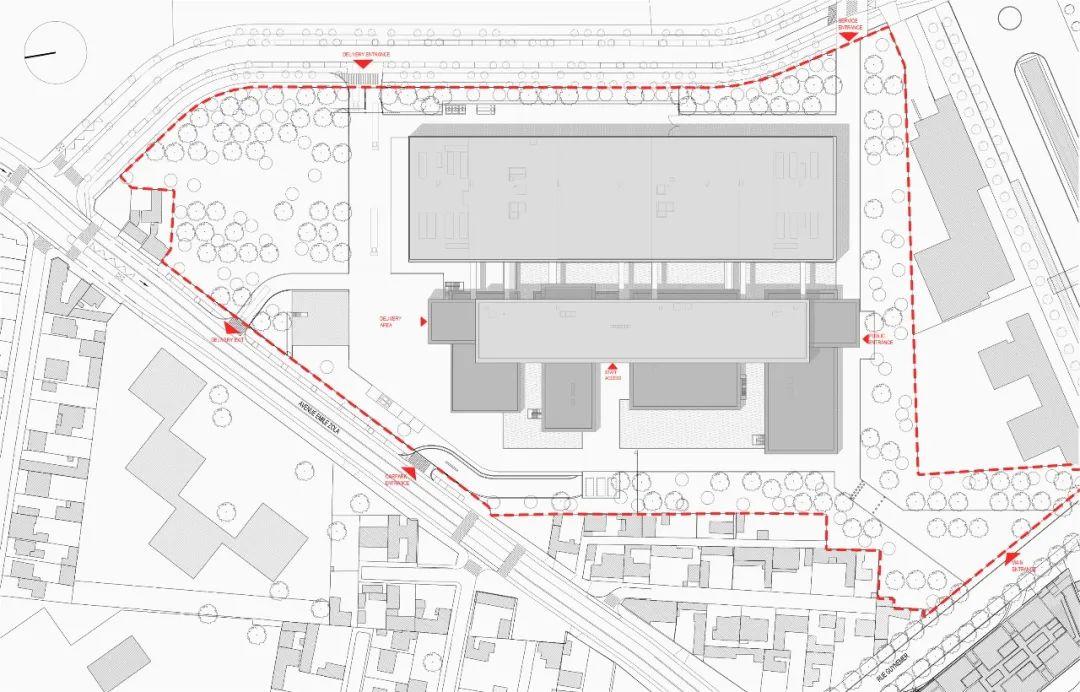


完整项目信息
PROJECT: NEW NATIONAL ARCHIVES OF FRANCE
SITE: Pierrefitte sur Seine-Saint Denis, Paris, France
PERIOD: 2005 – 2013
CLIENT: French Ministry of Culture and Communication
Represented by DAF – Direction des Archives de France
DELEGATE CLIENT: OPPIC – Opérateur du patrimoine et des projets immobiliers de la Culture
ARCHITECTS: Massimiliano and Doriana Fuksas
INTERIOR DESIGN: Fuksas Design
AREA: 108,136 square metres
PROGRAM: Archives (220 stock rooms on 10 levels), offices, reading room (160 seats), conference room (300 seats, seat “Carla” for Poltrona
Frau design by Doriana and Massimiliano Fuksas ), exhibition room, parking (207 places)
GENERAL CONTRACTOR: Bouygues Construction
CONSULTANTS:
Engineering: BETOM Ingégnierie
Acoustics: ALTIA
Landscape design: Florence MERCIER
Control department: SOCOTEC
Facades: Kyotec
Scenography conference room: Architecture and Technique
Laying rayonnage furniture warehouse: SAMODEFF
Furnishing public spaces: JAMES Ebéniste, the technical BETOM Ingégnierie
ARTISTIC INTERVENTIONS: Antony Gormley, Pascal Convert, Susanna Fritscher
ARCHIVES: Height 40 metres, length 163 metres, width 48 metres; 220 stock rooms on 10 levels; Reading room 160 seats;
Materials of the facades: opaque glass and aluminium
SATELLITE VOLUMES: 6 communicating satellite volumes; Materials of the facades: glass, light colour lacquered aluminium
CONFERENCE ROOM: 300 seats, seat “Carla” for Poltrona Frau design by Doriana and Massimiliano Fuksas
PARKING: 5,000 square metres; 161 underground places, 46 above ground
PROJECT CALENDAR:
Winning project of the 2005 competition by invitation, 5 studios selected on approximately 120 participants
June 2008: completion of the archaeological excavations
May 19, 2009: notification of the construction contract awarded to Bouygues Building, Ile-de-France – Public Works
June 18, 2009: start of work
11 September 2009: laying of the foundation stone
December 2009: end of foundations
October 2010: end of the concrete structure
March 2011: end of the structure steelwork
May 2011: water in the basins
Opening: January 11, 2013
版权声明:本文由FUKSAS授权发布,欢迎转发,禁止以有方编辑版本转载。
投稿邮箱:media@archiposition.com
上一篇:江湾城儿童活动中心改造:如海洋般流动的室内空间 / 反几FANAF
下一篇:居住空间作为身体的延伸:10个经典北欧住宅